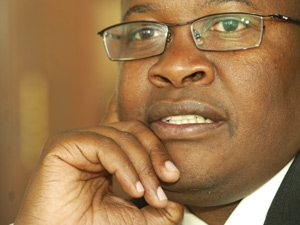
[miningmx.com] – IT’S questionable whether Eskom will have any success extracting R2bn in penalties from Glencore, a claim for non-performance that is as fraught as it is complex.
The two companies have been at loggerheads on two counts.
Firstly, Glencore has been trying to negotiate a better sales price for the 5.5 million tonnes a year (mtpa) of coal it supplies Eskom’s Hendrina power station from Optimum mine, a colliery which is held in the 66% Glencore-controlled Optimum Coal Holdings.
Secondly, and for its part, Eskom has claimed the quality of coal from Optimum mine has been declining for years.
The penalty in question relates to about two years’ worth of coal bought from Optimum mine and burned by Hendrina which Brian Molefe, Eskom CEO, said had damaged the power station. Molefe also wants to issue penalty claims to Glencore for future coal from Optimum that may fall below contract specifications.
Glencore’s response to Eskom’s penalty was to place Optimum Coal Holdings, and Optimum mine, into business rescue proceedings – a decision that imperils over a thousand jobs.
That comes at a bad time in South Africa where mining company distress has sent the country’s government reaching for the worry beads. Its part in the affair, however, was to immediately over-react, saying it would close down Optimum mine. It then, almost as quickly, retraced its decision, realising that the only entity to suffer from such a move was Eskom itself.
The debate about Eskom having success in its summons, however, comes from the basic misunderstanding that in summonsing the contract holder, Optimum Coal Holdings, Eskom’s legal team must take its place in a queue of creditors, assuming that the business practitioners decide to liquidate the firm.
Since debt in Optimum Coal Holdings has been collateralised by the mine, it’s quite likely a bank will stand first among equals in the creditors’ queue; certainly not Eskom’s claim.
The other shareholders in holdings company are Pembani/Shanduka with a 10% stake, as well as a further 22% in black economic interests, including an employee share option programme.
Will the business practitioners liquidate Optimum Coal Holdings? They may well.
According to Clinton Ephron, head of Glencore’s South African coal business, Glencore’s hope of doubling the price of Optimum coal (to about R300/t) would still result in the mine making a loss.
The reason times are so hard for Optimum Coal relates to a decision in May to shut down its export coal section following a slide in the internationally traded price to about $60/t. The fact of the matter is that the entire mine needs a far higher export price to keep it afloat.
Glencore had pumped R900m into Optimum Mine in the last year alone to keep it liquid. It meanwhile promised to extend the coal sales agreement to Eskom to 2021 from the current contract expiry of 2018 if it agreed to the doubling in the sale price. Eskom declined.
In an interview with Miningmx, Molefe said it may be possible to sue Glencore directly, and not Optimum Coal Holdings, if there was evidence that the mine’s demise was related to decisions wholly taken by Glencore, although that may be a long shot.
It was Gencor that decided in the Eighties that instead of exclusively supplying Eskom, Optimum ought to be expanded so that it could sell export-quality production. Why not, Gencor reasoned: Richards Bay Coal Terminal was aggressively expanding and the export markets were in buoyant fettle.
That decision, however, meant Optimum mine’s resources were exhausted quicker than they might have been and result now in the falling coal qualities for which Eskom wants recompense.
Meanwhile, there are perhaps more pressing worries for Eskom than the penalty.
If Optimum mine is shut it will have to source 5.5mtpa of coal for Hendrina. Given that Optimum supplies the coal by conveyor into Hendrina, it’s possible the transport cost of alternative coal supplies may make the exercise just as expensive as a R300/t contract with Glencore.











